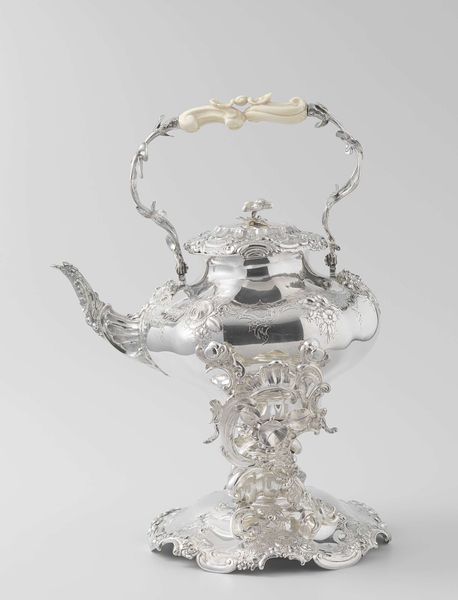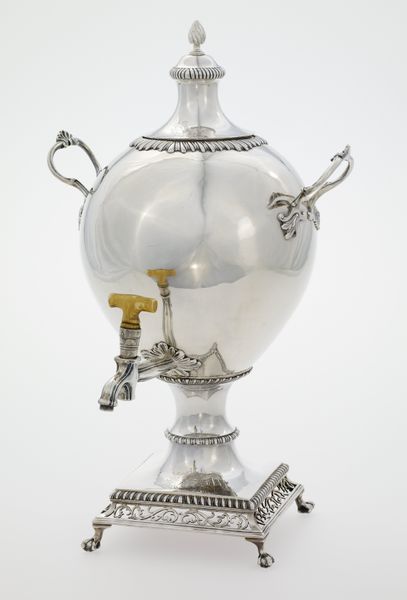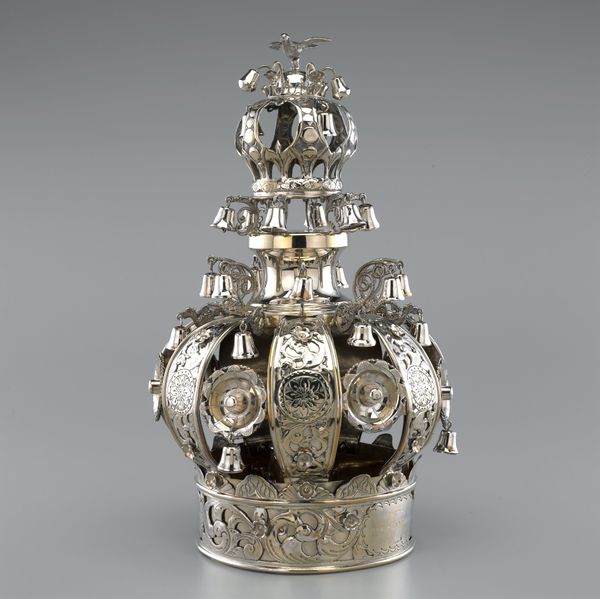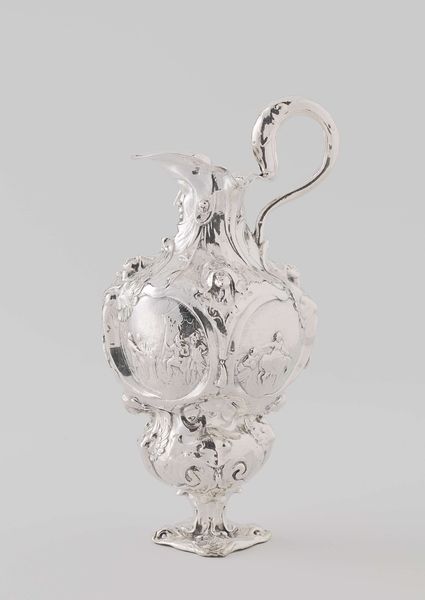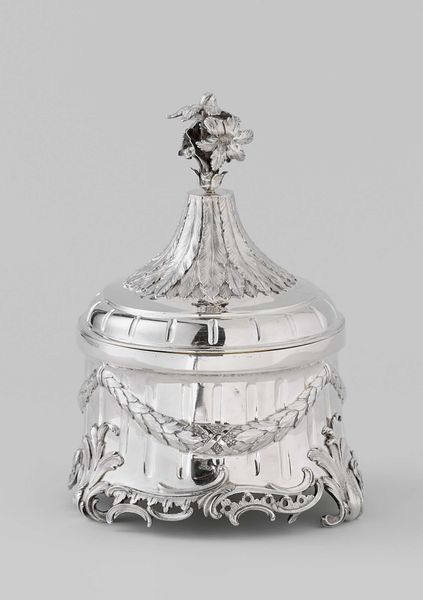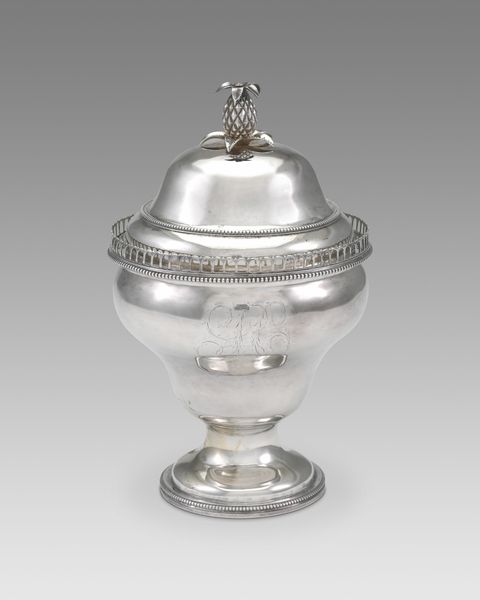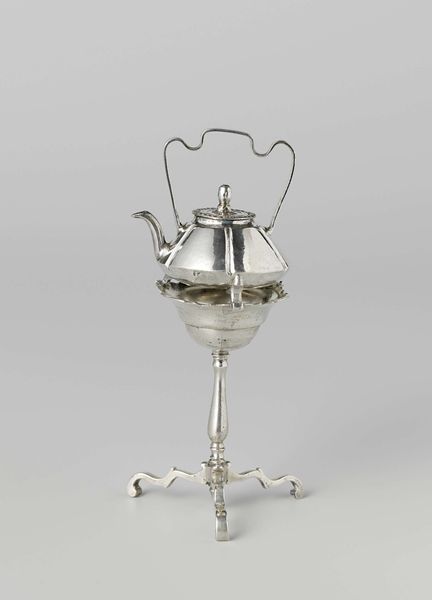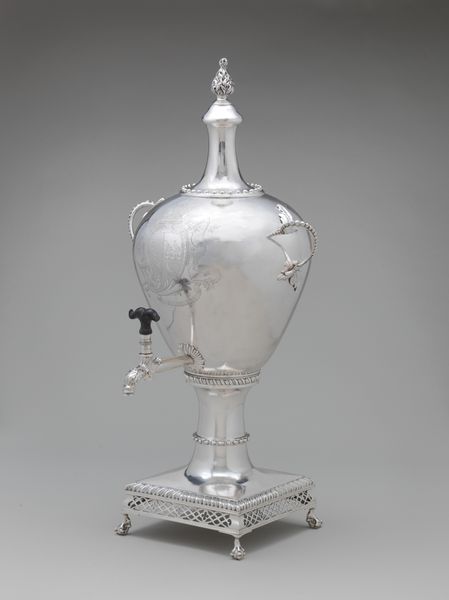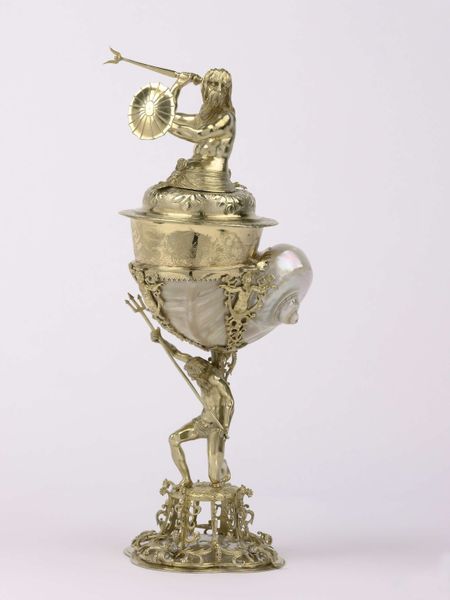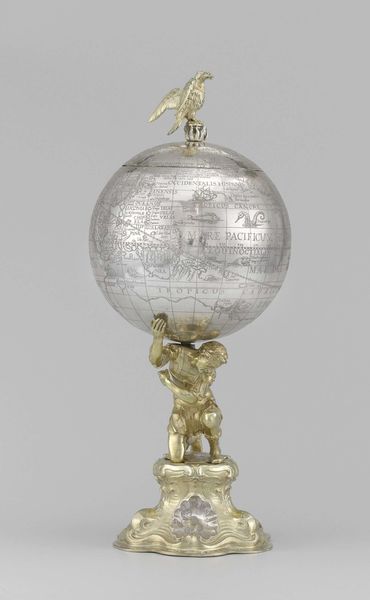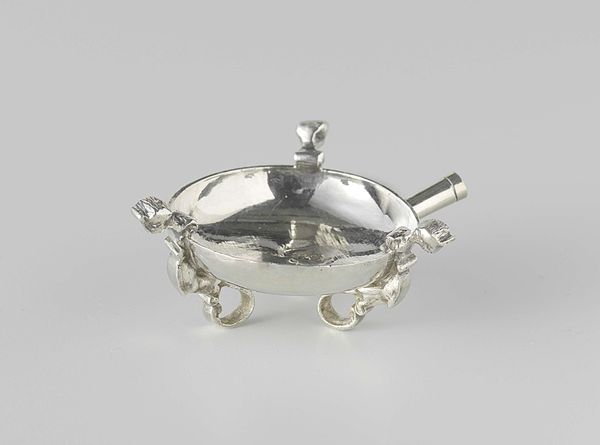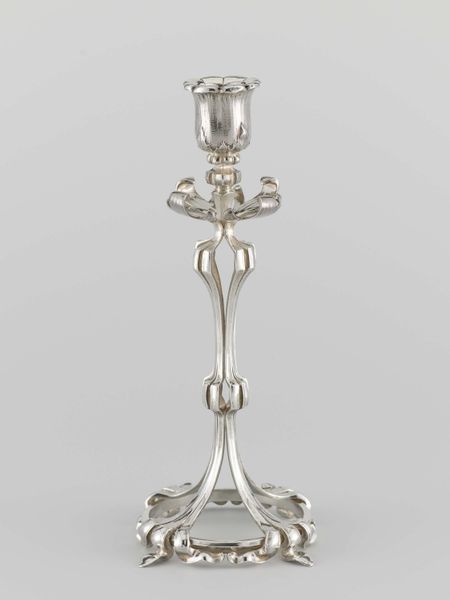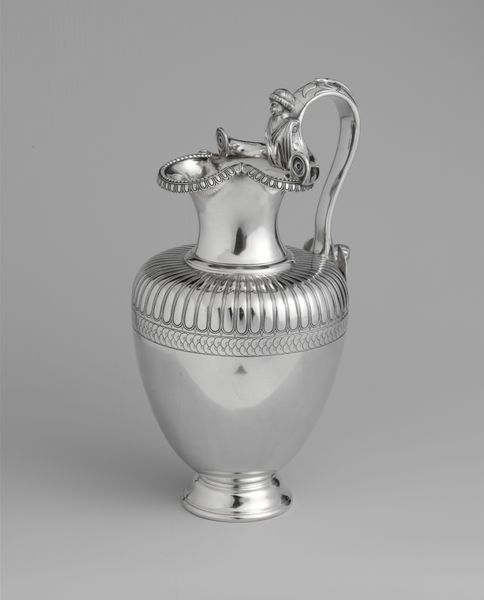
Dimensions: height 31.5 cm, width 30.0 cm, depth 23.0 cm, diameter 23.0 cm, height 26.5 cm, width 22.4 cm, weight 1123.0 gr, height 21.3 cm, width 18.7 cm, weight 1206.0 gr
Copyright: Rijks Museum: Open Domain
Editor: Here we have a silver teapot by Engelbart Joosten, made in 1776. It's very ornate! I immediately notice the spherical form and how the decorative flourishes seem to almost burst from its surface. What stands out to you from a formal perspective? Curator: The primary feature that commands my attention is indeed the interplay of form and ornamentation. The object's pure, geometric spherical body, a Platonic ideal if you will, is in stark contrast with the florid Rococo detailing that adorns it. Editor: Rococo...so lots of decoration, curves, and asymmetry? Curator: Precisely. Observe how the applied silverwork—the leaves, tendrils, and perhaps even the suggestion of insects—disrupt the otherwise pristine surface. Consider, also, the dramatic curvature of the handle and spout, which function as integral parts, yet visually echo the base's undulating lines. Editor: It’s as if the silversmith was playing with the tension between order and chaos. What effect does the material have? Curator: Silver, chosen for its reflective properties, accentuates the interplay of light and shadow across the piece's surface. The chasing and repoussé techniques contribute to the sculpture's tactile quality. Do you find the juxtaposition of smooth and textured surfaces appealing? Editor: Absolutely, it elevates it beyond a functional object into something purely aesthetic. This close observation has made me see the piece with new eyes. Curator: Indeed. Analyzing such visual strategies allows us a deeper engagement with the artistry of its design.
Comments
No comments
Be the first to comment and join the conversation on the ultimate creative platform.
